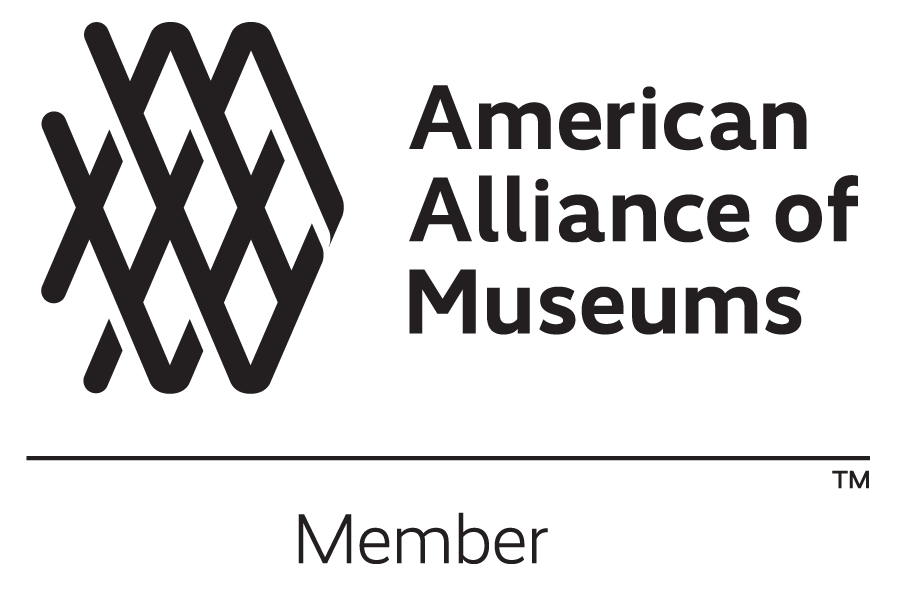Special Virtual Lecture
Samuel Fraunces: Revolutionary Tavernkeeper and Patriot
Presented by Mary Tsaltas-Ottomanelli
September 13, 2021
In honor of Fraunces Tavern Museum's Tavern Week, this digital lecture celebrates Samuel Fraunces, a revolutionary tavernkeeper, and Patriot during the Revolutionary War. Presented by Mary Tsaltas-Ottomanelli, the lecture explores the mysteries surrounding his early life, highlights his life in New York City and Philadelphia, and his relationship with General Washington.
Early Life & Tavern Beginnings
Samuel Fraunces’ early life is a mystery to researchers and historians. The first known documentation of him is from 1755 when he registered as a “freeman” and designated himself as an “innholder” on the City’s register of freemen. This admission was required by law of all merchants, shopkeepers, and tradespeople who had not been born in the city or served a regular seven-year apprenticeship to a trade.
Although Fraunces declared himself an innkeeper and was granted one of the year’s 218 tavern licenses in 1756, his whereabouts for two years are unknown. In October of 1755 he married Mary Carlile, who presumably died sometime over the next twenty five months. On November 30, 1757 he was remarried to Elizabeth Dalley (Dailey) who remained his wife until his death.
Between 1758 and 1762, Fraunces owned and operated the Free Mason’s Arms, located on the west side of Broadway. This tavern became the infamous Hampden Hall, headquarters of the Sons of Liberty during the years immediately prior to the American Revolution.
In 1762, Samuel Fraunces mortgaged the Free Mason’s Arms to one Walter Rutherford and used that money, along with another mortgage, to purchase his next business venture. On January 15, Fraunces purchased the building on the corner of Dock and Broad Street (known today as 54 Pearl Street) from Oliver and Philia De Lancey, Beverley and Susannah Robinson, and James Parker. The large brick house had been built around 1719 by Stephen De Lancey on the late 17th century landfill.
Several months after the purchase, Fraunces opened the Sign of Queen Charlotte, named for the wife of King George III. Within a year the establishment was commonly referred to as the Queen’s Head Tavern. The Tavern was ideally located in the center of the commercial district, near the Exchange, and, most importantly, “in the Great Dock Street” adjacent to Coenties Slip, which was the heart of the City’s waterfront.
Life at the Tavern
Fraunces’ household consisted of a minimum of 14 people: Fraunces and his wife, two sons, five daughters (none of which were named Phoebe), several indentured servants and enslaved persons of African descent, a hired maid, and a waiter. The house was well known as an eatery. Fraunces directed his efforts toward securing the business of “private clubs and companies.” Although he probably provided some overnight accommodations, Fraunces preferred long-term “boarders” or lodgers – by week, month, quarter-year, or year.
Fraunces was a true entrepreneur, always trying to expand his own business activities and improve his personal fortunes. In 1765, he leased the Tavern operations to John Jones. This freed Fraunces to open an English style pleasure garden, Vauxhall Gardens, on property he leased from Trinity Church. This outdoor resort, located at the old Bowling Green Garden, served food and provided entertainment. In the Vauxhall building, Fraunces displayed a gallery of wax figures, designed to draw large crowds. He remained the proprietor of Vauxhall until 1774.
In late 1765, Fraunces moved his family to Philadelphia. Financially, however, he was tied to New York. He still owned the 54 Pearl Street Tavern and had hired someone to operate the Vauxhall Gardens for him. In Philadelphia, Fraunces opened another tavern, also named the Queen’s Head or Queen Charlotte’s, which he ran briefly from 1766 to 1768. This short stint in Philadelphia, just a three-day stage coach trip from New York, was the beginning of Fraunces’ ties with the Quaker city. It is evident that he built lasting friendships and business relations with Philadelphians; a surviving note written by Fraunces to “Dear Friend,” merchant Thomas Clifford, accompanied by a gift of six lobsters, promises to see him again in six weeks. Fraunces resumed proprietorship of New York’s Queen’s Head Tavern in 1770.
Fraunces boasted that the Queen’s Head Tavern in New York served “the best Clubs” and provided the public with the “greatest entertainments.” He was known for his cooking. He supervised the Tavern kitchen operations and performed the specialty cooking himself, notably the preparation of desserts. His cooking style was English. Meats were central to the 18th century diet, and Fraunces advertised serving beef steak, mutton or pork chops, and veal cutlets as well as soup and the popular oysters – fried or pickled. The major meal, ordinarily served around 1:30, commonly consisted of a variety of dishes, several courses, and served a large number of people. A wide variety of desserts, such as cakes, tarts, jellies, syllabubs, blaumage and sweet meats, usually found in only the best taverns, were available at the Queen’s Head.
To compete with the other New York City taverns, Fraunces started to offer food any time of the day. Fraunces also did take-out meals, including dessert for those who lived “a convenient distance.” He also provided provisions to the maritime crowd by selling his pickled goods to supply stores.
Fraunces Tavern During the Revolutionary War
Samuel Fraunces was a patriot. During the era preceding the American Revolution, the Tavern housed a number of radical activities which included meetings of the Sons of Liberty. The so-called New York Tea Party was launched from the Tavern, which occurred on April 22, 1774.
Samuel Fraunces probably first met George Washington during May or June of 1776 when the meetings of the Provincial Congress of New York were held in the Tavern. Washington was also recorded attending a court-martial there in April of 1776. It would be another eight years before Fraunces and Washington would continue their professional relationship.
When the British occupied New York City on September 15, 1776, Samuel Fraunces was already in Elizabethtown, New Jersey. Fraunces was captured in June of 1778 and brought back to New York City. Captive, Fraunces was forced to work as the family cook for General Robertson. He used his position in the kitchen to aid American prisoners, sneaking them table scraps, giving them clothing and money, and even assisting some with escaping. Fraunces also passed on intelligence. Later, Washington would write, identifying himself as a “warm friend” of Fraunces, that the man had invariably “maintained a constant Friendship and attention to the Cause of our Country and its Independence and Freedom….”
Samuel Fraunces financially overextended himself during the economically depressed war years. He was forced to sell the Tavern but the news of the battles of Lexington and Concord postponed the sale indefinitely. He emerged from the war poor, begging Washington and the new government for war time activity compensation, with interest. His request was partially honored. The Government agreed to lease the Tavern building for two years as office space for the Office of Foreign Affairs and the War Office in compensation.
Shortly after the negotiation of the lease, Fraunces sold the Tavern in April 1785 to George Powers. He briefly tried his hand at farming in New Jersey and then returned to New York in 1788, renting a space at 16 Nassau Street for another tavern. By the next year he had moved to 49 Cortlandt Street and then again to Broad Street where operations were handled by his wife, Elizabeth, after Samuel Fraunces entered the employ of George Washington.
Post-War And Death
As the newly elected President, Washington hired Fraunces as his chief steward in New York from May 1789 to February 1790. He was responsible for overseeing the operation of the house and a staff of twelve. Fraunces also selected food for Washington’s table and supervised its preparation. The relationship between Fraunces and Washington appears to have been all business. Fraunces was allotted a small budget for his purchases as chief steward, which he struggled to stay within. Maintaining a tight purse was Washington’s way of avoiding projecting a royal image of grandeur to the public and politicians. The two men appear to have had at least one disagreement over the serving of wine at the servant’s table.
After the Federal government moved to Philadelphia in 1790, Samuel Fraunces rejoined Washington’s household. It was on this move that Fraunces bought property in Philadelphia, which included two houses, where he resettled his family.
Samuel Fraunces left Washington’s household in 1794 on good terms. In July of that year he leased one of his houses and rented another tavern, promising the same type of service he had provided in New York. For some reason Fraunces moved in June of 1795 and assumed proprietorship of the Tun Tavern. He spared no expense in equipping his new tavern. The tavern never realized its full potential. It had only been open a few months when Fraunces died at the age of 72. He was interred on October 12, 1795, in Philadelphia’s St. Peter’s Church burying ground.




